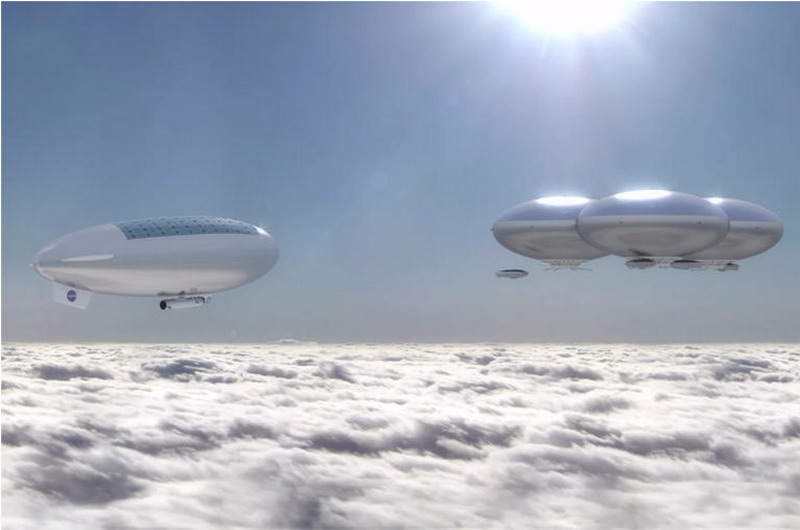High Altitude Venus Operational Concept on:
[Wikipedia]
[Google]
[Amazon]
 High Altitude Venus Operational Concept (HAVOC) is a set of crewed
High Altitude Venus Operational Concept (HAVOC) is a set of crewed
the full paper
available at NASA Technical Reports Server (accessed 16 May 2012)

NASA concept pageNASA animation of HAVOC in action
{{Venus spacecraft Missions to Venus Human missions to Venus Proposed space probes Extraterrestrial aircraft Airships
 High Altitude Venus Operational Concept (HAVOC) is a set of crewed
High Altitude Venus Operational Concept (HAVOC) is a set of crewed NASA
The National Aeronautics and Space Administration (NASA ) is an independent agencies of the United States government, independent agency of the US federal government responsible for the civil List of government space agencies, space program ...
mission concepts to the planet Venus
Venus is the second planet from the Sun. It is sometimes called Earth's "sister" or "twin" planet as it is almost as large and has a similar composition. As an interior planet to Earth, Venus (like Mercury) appears in Earth's sky never f ...
. All human portions of the missions would be conducted from lighter-than-air craft or from orbit.
Background
Venus is a planet with arunaway greenhouse effect
A runaway greenhouse effect occurs when a planet's atmosphere contains greenhouse gas in an amount sufficient to block thermal radiation from leaving the planet, preventing the planet from cooling and from having liquid water on its surface. A ...
, with surface temperatures and pressure of and respectively. Conventional rocket engines will not work at those pressures. Hence, human missions to Venus have historically been thought impractical, if not impossible. However, Venus has advantages for crewed travel, such as being closer than Mars, an Earth-like gravity (0.904 g) and an atmosphere that provides a level of protection from solar and interstellar radiation.
Whereas all ground missions measured their operational time in minutes or hours, the Soviet Vega
Vega is the brightest star in the northern constellation of Lyra. It has the Bayer designation α Lyrae, which is Latinised to Alpha Lyrae and abbreviated Alpha Lyr or α Lyr. This star is relatively close at only from the Sun, a ...
missions found success in launching small balloons, that operated until their batteries were exhausted (days). At altitude, the atmosphere of Venus is and (the equivalent pressure at an elevation of about on Earth). However, due to the large amount of , the density for a given pressure is greater than in Earth's atmosphere. Therefore breathable air acts as a buoyant gas. At the same time, the gravity at the proposed altitude is 8.73 m/s2 versus 9.81 m/s2 on Earth's surface.
Venus has an induced magnetosphere from the interaction of its thick atmosphere with the solar wind, and its nearer proximity to the Sun brings it further within the Sun's magnetic field, which decreases the interstellar radiation levels. With the addition of the reduced deep space exposure time, the radiation levels anticipated by astronauts are much less than an equivalent Mars mission.; draft version othe full paper
available at NASA Technical Reports Server (accessed 16 May 2012)
Mission concepts
Suggested specifications for the robotic airship
Phase 1
Phase 1 involves a robotic exploration via a , , airship. It would be used to test many of the technologies that would be used in the crewed version, including the dirigible, energy systems, and aerocapture and descent sled.Phase 2
Phase 2 is for astronauts to orbit Venus. The individual components would be assembled remotely, and the crew would join the larger assembly when all the preparations are complete. There would be a return module sent to low Venus orbit ahead of the astronauts, with which they would rendezvous in Venusian orbit, before returning to Earth.Phase 3
Phase 3 involves astronauts descending into the atmosphere, for 30 Earth days. The airship for this would be long and tall. The aeroshell would be used for heat dissipation. A parachute would be deployed to further slow the craft, before finally inflating the airship. Once inflated, the crew would live in the airship for a period equivalent to thirty Earth days, before detaching and ascending in the Venus Ascent Vehicle. The outward journey for this phase would take 110arth
Arth is a village, a town, and a municipality in Schwyz District in the canton of Schwyz in Switzerland.
The municipality consists of the villages Arth, Oberarth, and Goldau. The four settlements Rigi Kulm, Rigi First, Rigi Klösterli, an ...
days, and the return 300. The total mission time would thus be 440 days.
Phase 4
Phase 4 of the concept is to send humans into the atmosphere of Venus for 1 Earth year,arth
Arth is a village, a town, and a municipality in Schwyz District in the canton of Schwyz in Switzerland.
The municipality consists of the villages Arth, Oberarth, and Goldau. The four settlements Rigi Kulm, Rigi First, Rigi Klösterli, an ...
year, similar to Phase 3 but longer.
Phase 5
Phase 5 is introducing a permanent human presence, in the Venusian atmosphere, by way of a permanent space station-type spacecraft.See also
*Aerospace architecture
Aerospace architecture is broadly defined to encompass architectural design of non-habitable and habitable structures and living and working environments in aerospace-related facilities, habitats, and vehicles. These environments include, but are n ...
References
External links
*NASA concept page
{{Venus spacecraft Missions to Venus Human missions to Venus Proposed space probes Extraterrestrial aircraft Airships